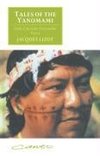
-
 Anglický jazyk
Anglický jazyk
Maori politics
Autor: Source: Wikipedia
Source: Wikipedia. Pages: 52. Chapters: Treaty of Waitangi, Tino rangatiratanga, Ratana, Maori protest movement, 1981 South Africa rugby union tour of New Zealand, New Zealand First, Treaty of Waitangi claims and settlements, New Zealand foreshore and seabed... Viac o knihe
Na objednávku
17.37 €
bežná cena: 19.30 €
O knihe
Source: Wikipedia. Pages: 52. Chapters: Treaty of Waitangi, Tino rangatiratanga, Ratana, Maori protest movement, 1981 South Africa rugby union tour of New Zealand, New Zealand First, Treaty of Waitangi claims and settlements, New Zealand foreshore and seabed controversy, Maori electorates, Minister of Maori Affairs, Ikaroa-Rawhiti, Maori King Movement, Waitangi Tribunal, Maori Women's Welfare League, Treaty of Waitangi Act 1975, Bastion Point, Turangawaewae, Nga Tamatoa, United Tribes of New Zealand, Waitangi Day Act, Polynesian Panthers, Te Ture Whenua Maori Act 1993, Aotearoa Cafe, T. W. Ratana, Tight Five, New Zealand Day Act 1973, Orewa Speech, MultiCultural Aotearoa, Maori Language Act 1987, Kawanatanga, Foreshore and Seabed Act 2004, Maori voting rights in Australia, Te Tawharau, Koru Flag, Marine and Coastal Area Act 2011, Cultural safety, Hikoi, Te Puni Kokiri, Hui, Koata. Excerpt: The Treaty of Waitangi (Maori: Tiriti o Waitangi) is a treaty first signed on 6 February 1840 by representatives of the British Crown and various Maori chiefs from the North Island of New Zealand. The Treaty established a British Governor of New Zealand, recognised Maori ownership of their lands and other properties, and gave the Maori the rights of British subjects. The English and Maori language versions of the Treaty differed significantly, so there is no consensus as to exactly what was agreed to. From the British point of view, the Treaty gave Britain sovereignty over New Zealand, and gave the Governor the right to run the country. The Maori seem to have had a range of understandings, many of which conflicted with the British understanding. After the initial signing at Waitangi, copies of the Treaty were taken around New Zealand and over the following months many other chiefs signed. In total there are nine copies of the Treaty of Waitangi including the original signed on 6 February 1840. Around 500 chiefs, including 13 or more women signed the Treaty of Waitangi. Until the 1970s, the Treaty was generally ignored by both the courts and parliament, although it was usually depicted in New Zealand history as a generous and loving act on the part of the Crown. From at least the 1860s, Maori have looked to the Treaty for rights and remedies for land loss and unequal treatment by the state, with little success. From the late 1960s Maori began drawing attention to breaches of the Treaty. Subsequent histories have emphasised problems with its translation. In 1975 the Waitangi Tribunal was established as a permanent commission of inquiry tasked with researching breaches of the Treaty by the Crown or its agents, and suggesting means of redress. Today it is generally considered the founding document of New Zealand as a nation. Despite this, the Treaty is often the subject of heated debate. Many Maori feel that the Crown did not keep its side of the bargain and have presen
- Vydavateľstvo: Books LLC, Reference Series
- Rok vydania: 2019
- Formát: Paperback
- Rozmer: 246 x 189 mm
- Jazyk: Anglický jazyk
- ISBN: 9781150978784




 Nemecký jazyk
Nemecký jazyk 






